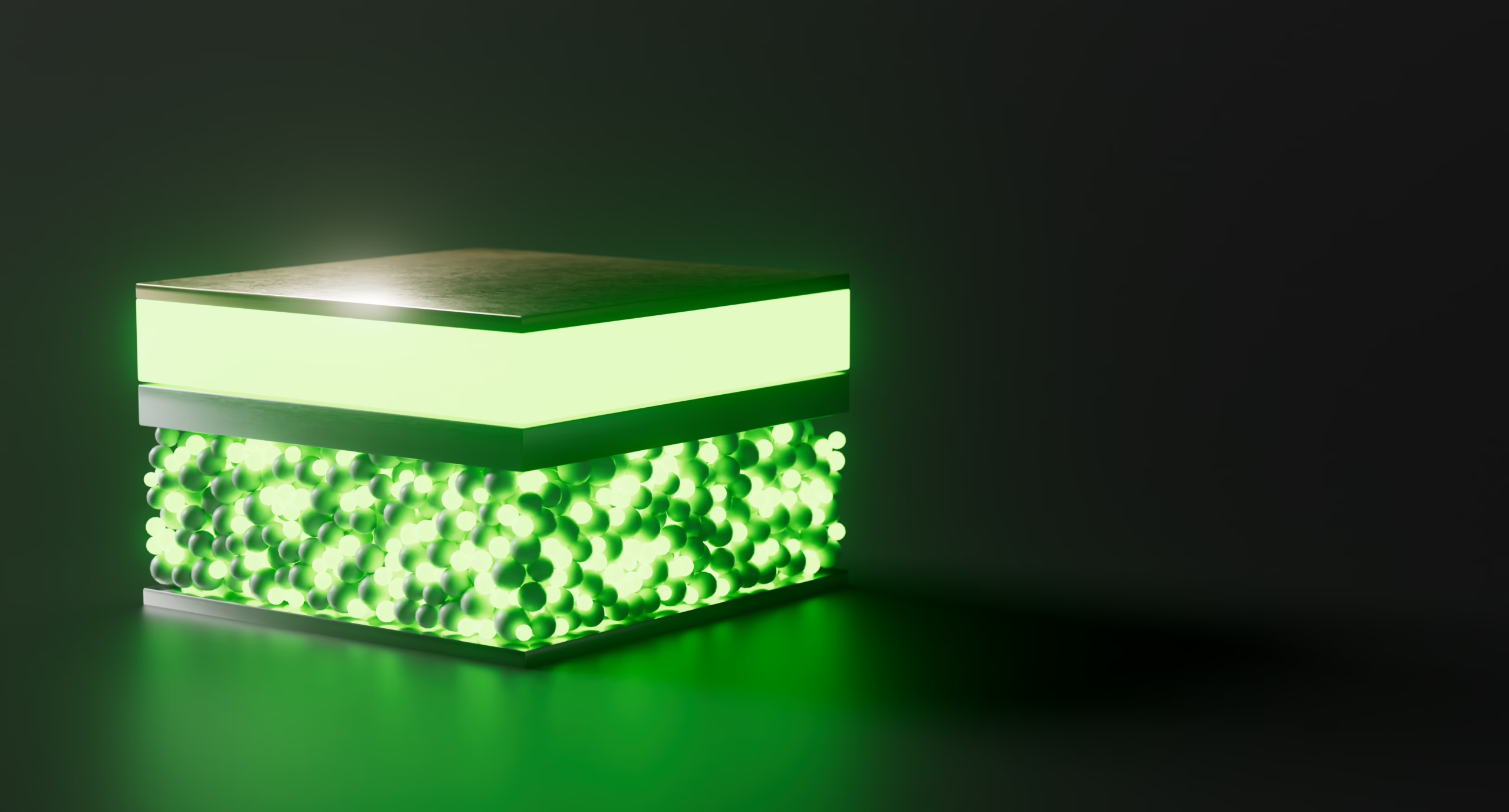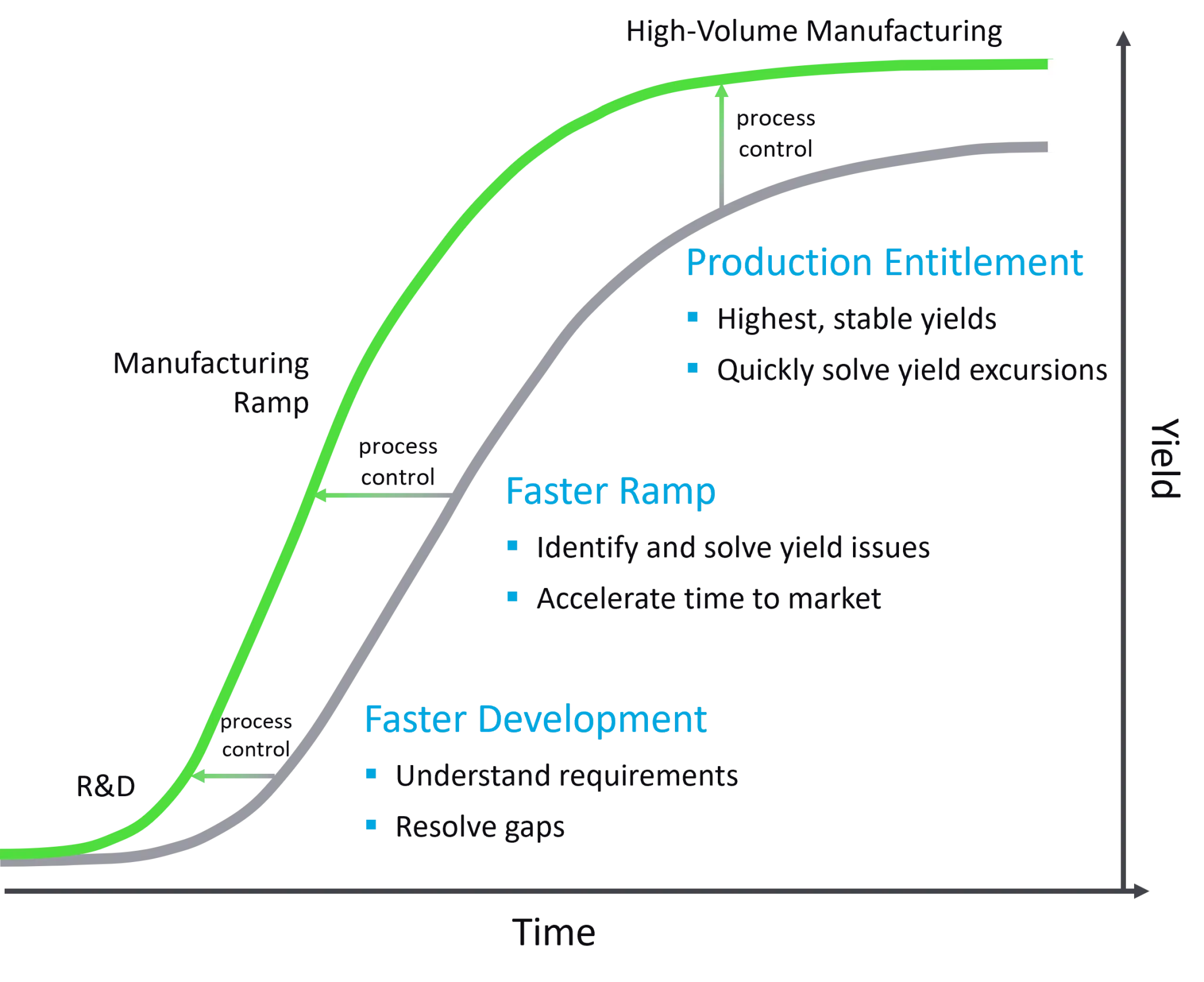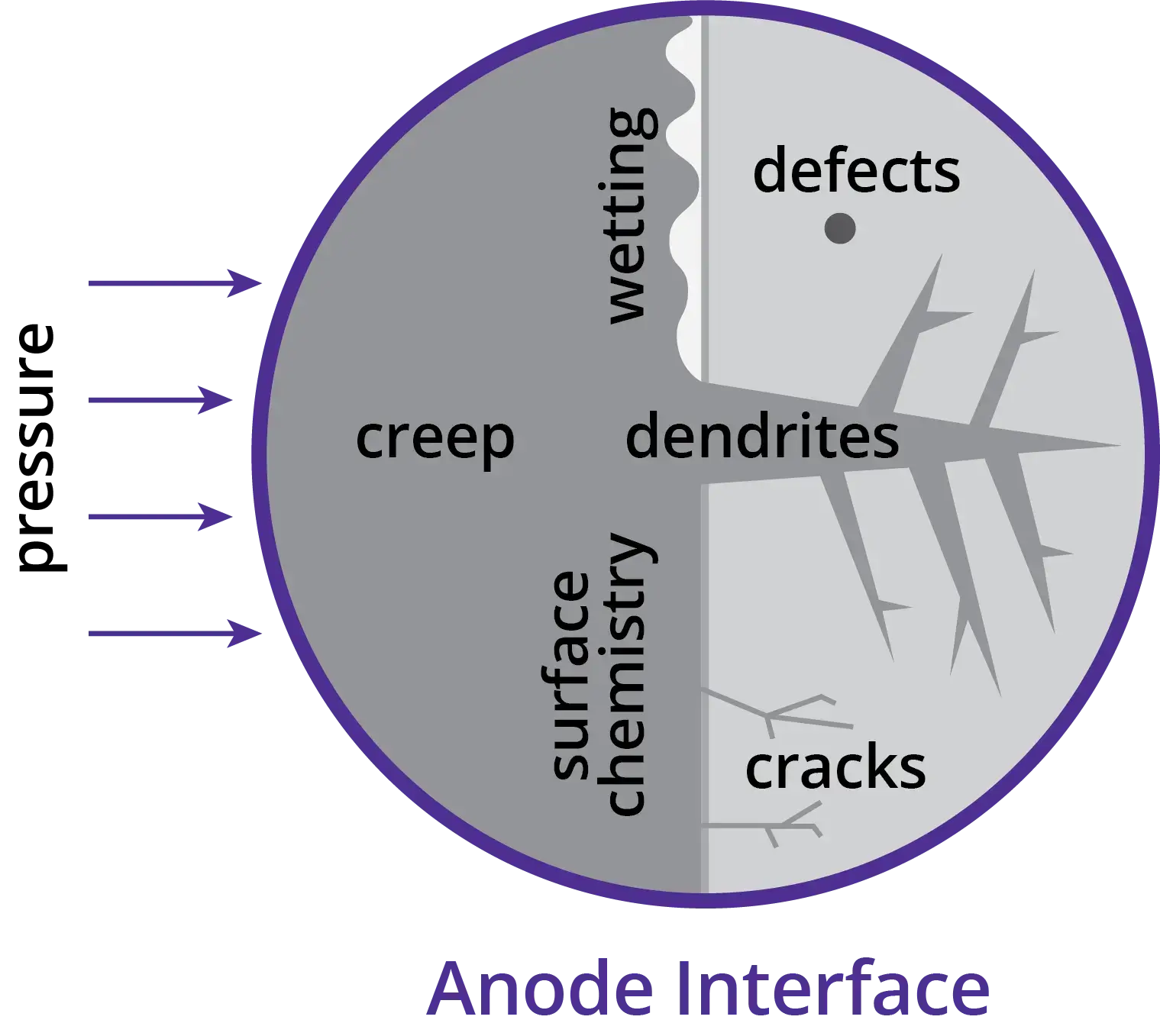Solid-state battery (SSB) technology holds the promise of revolutionizing energy storage and improving consumer electronics, wearable computing, medical devices, wireless sensors and electric vehicles (EVs). With higher-energy density, longer cycle life, faster charging times and reduced fire risk compared to traditional lithium-ion batteries, SSBs are poised to become a game-changer in the industry.
Numerous market drivers are spurring the demand for SSBs, with the biggest driver coming from EV applications. EVs stand to benefit greatly from the increased energy density and reduced weight of SSBs, enabling longer ranges and faster charging times. However, challenges in manufacturability and defectivity must be addressed to make SSBs viable for high-volume manufacturing (HVM).
Solid-State Battery Technology: In a Nutshell
All batteries contain three main components: the anode, cathode and electrolyte. In traditional batteries, a liquid electrolyte serves as a medium for ion passage between the cathode and anode, generating electrical potential and storing energy. In SSBs, ions are conducted between the anode and cathode using a solid electrolyte rather than a liquid. Solid electrolytes comprise materials that conduct lithium ions at or near room temperature, including ceramics/oxides, sulfides and polymers. Many companies are targeting anodes made from pure lithium to enable higher energy densities, while cathodes tend to be based on traditional Li-ion chemistries such as nickel manganese cobalt (NMC) and lithium iron phosphate (LFP), depending on the specific performance goals of the cell.

How Solid-State Batteries Work and Why They are Safer
During charging, lithium ions move from the cathode to the anode through the solid electrolyte. When the battery discharges, the ions move back to the cathode, creating a flow of electrons that power the device. SSBs are generally considered safer than lithium-ion batteries due to the elimination or reduction of the liquid electrolyte, which is the primary flammable component in a battery. SSBs are less likely to experience cell-to-cell thermal propagation, meaning that if an SSB cell ignites, it would not cause the surrounding cells to ignite like in Li-ion batteries.
Solid-State Batteries’ Manufacturing Challenges
Development cycles for advanced technologies like semiconductors or solid-state batteries include three phases. The first is the R&D phase, where requirements are confirmed, and technology is tested in lab conditions. This phase requires analysis techniques to troubleshoot and optimize.

The second is the ramp phase, where proven technology from R&D is adapted for manufacturing. Manufacturers must quickly ramp up yield and capacity, accelerating up the yield curve by solving issues promptly. Finally, the HVM phase demands the highest stable yield. During this phase it is important to continue monitoring production lines to resolve any issues swiftly. SSB technology has been proven in the lab for many of the manufacturers, but now they are facing the challenges of ramping up to manufacturing.
Defectivity is a key barrier to reaching the solid-state battery HVM phase. Process control methodologies can be implemented using advanced inspection or metrology systems to provide the data required to quickly detect, characterize and fix issues to help accelerate up the yield curve. Process control equipment must be integrated inline to identify problems at the source to minimize yield loss and delays in manufacturing.
Reliability and Yield
High reliability is a key requirement of SSBs, especially for automotive applications where safety is paramount. SSBs consist of tens to hundreds of layers built or stacked on top of each other, with no redundancy. The reliability of every layer is critical to produce reliable cells. In terms of chemistry and materials, the industry currently focuses on silicon and lithium metal. The lithium-metal battery represents a greater leap in scientific terms than silicon anodes, although silicon anodes are currently more market-ready. Both materials present manufacturing challenges, and production yields may determine the industry’s choice of materials.
New Process Control Requirements
A major challenge in SSB manufacturing is designing stable production processes that can yield high-performance products at high volume. The solid electrolyte can be only 20 microns thick, introducing dimensions and standards new to the battery industry. Process challenges such as dendrite growth from the Li-metal electrode can propagate across the solid electrolyte and short-circuit the cell. Dendrites can be caused by a variety of factors, including physical defects, material impurities, pinholes, cracks or uneven topography. Manufacturers must adopt more rigid production processes with inline process control to improve yield and reliability. Errors in implementing these processes or unexpected excursions can lead to quality control issues, such as uneven thickness or impurities in the electrolyte, resulting in reduced battery performance, a shorter lifespan and safety hazards like overheating or short-circuiting.

The KLA Approach to Process Control for Solid-State Batteries
KLA is collaboratively engaged with SSB manufacturers in solving complex production challenges to maximize their yield and business success. KLA brings its expertise in process control, including inspection and metrology, from the semiconductor industry to the battery manufacturing space to help SSB makers move efficiently to HVM.
Here are some of the interesting applications where KLA is engaging with SSB manufacturers:
- Analyzing the resilience of solid-state electrolytes against cracking and dendritic growth.
- Using optical inspection technologies for detecting defects, like sub-20µm dendrite growth sources, in solid-electrolyte separators.
- Enhancing the electrodeposition process for improved uniformity of the electrode surface for enhanced performance.
- Implementing established process control and yield management strategies to improve battery manufacturing quality and efficiency.
The KLA Advantage
The layered architecture of solid-state batteries introduces process and process control challenges much like those of semiconductors, where KLA has nearly 50 years of experience. KLA’s multidisciplinary teams of physicists, engineers, data scientists, and problem-solvers tackle the industry’s hardest problems head-on, in close collaboration with leaders across the entire automotive ecosystem. KLA’s technology provides solutions to meet the quality control and inspection requirements of SSB manufacturing. These solutions help manufacturers improve yield, reduce costs, and produce better-quality, more reliable SSBs.
The Solid-State Battery Development Roadmap
The question on everyone’s mind is ‘when will SSBs be available?’ Early versions of polymer-based SSBs are available for portable power stations with limited use in EV and transportation applications. The polymer-based chemistries are a step towards solid-state battery technology but do not yet feature the full promise of improved energy density, longer cycle life, faster charging times and reduced fire risk.
For higher energy density and maximum performance, sulfide-, oxide- or advanced polymer-based battery chemistries will be required. Several startups and established battery manufacturers are qualifying cells and starting low-volume manufacturing lines according to public releases, but they face significant challenges in their ramp to manufacturing. Sulfide-based solid electrolytes, despite offering high ionic conductivity at room temperature, face significant interface issues and lithium dendrite growth. Oxide-based solid electrolytes, while mechanically and chemically stable, are difficult to process due to their brittleness and high sintering temperatures. This complexity and the need for high yield rates are significant barriers to the commercialization of these advanced SSBs.
SSB technology has the potential to revolutionize energy storage. Through innovative inspection methods, material resilience analysis, and deposition techniques, KLA continues to drive progress in the electronics industry, collaborating with customers on the development of reliable and high-performance solid-state batteries. By addressing the manufacturing challenges and leveraging advanced process control and yield management strategies, the industry can overcome the hurdles and make SSBs viable for high-volume manufacturing.
Follow Us